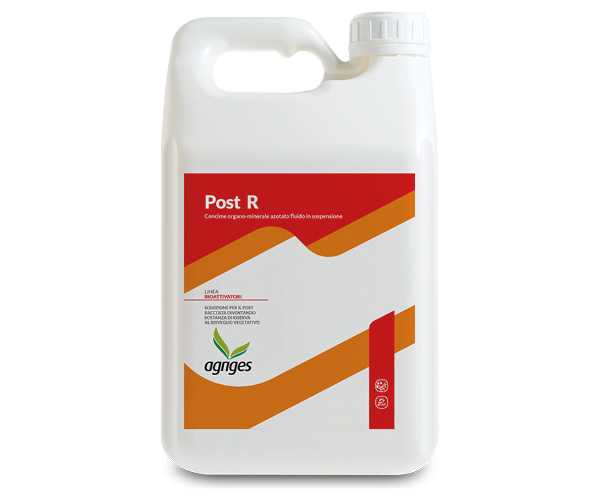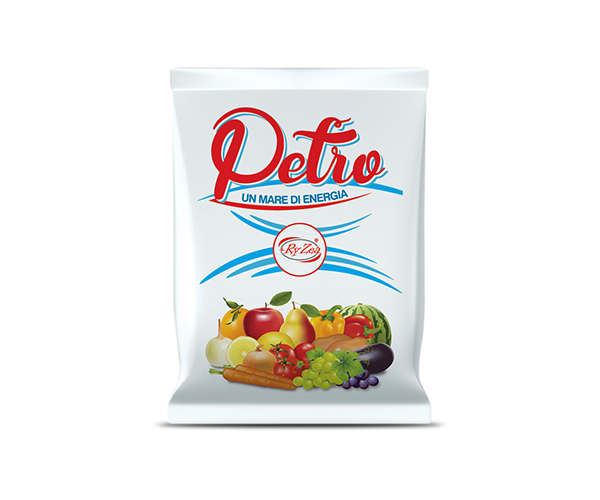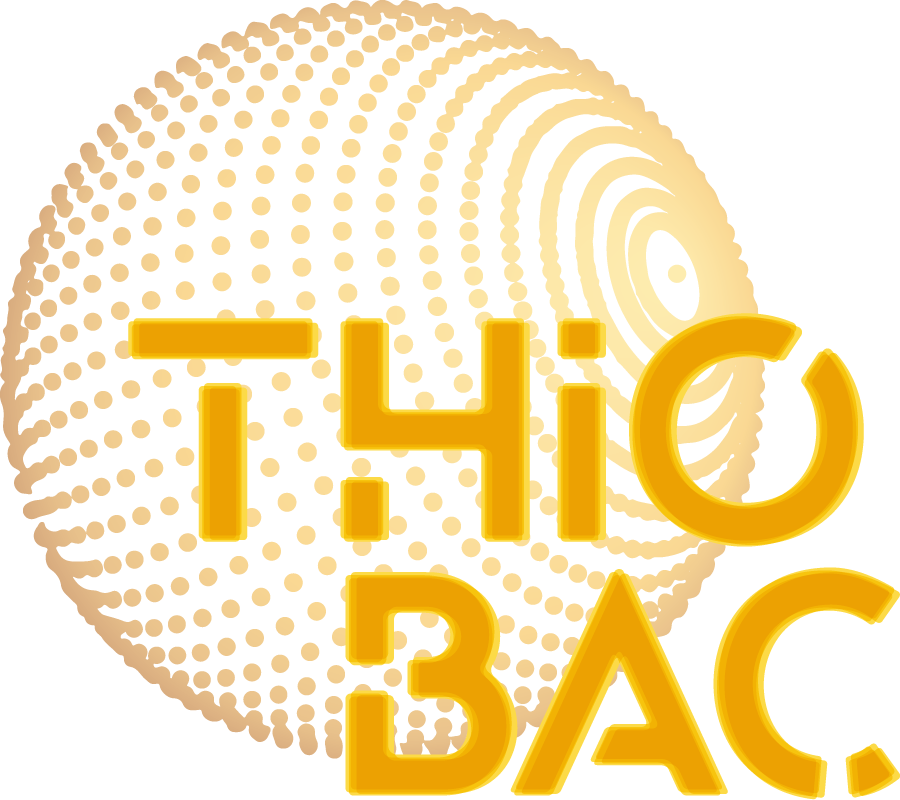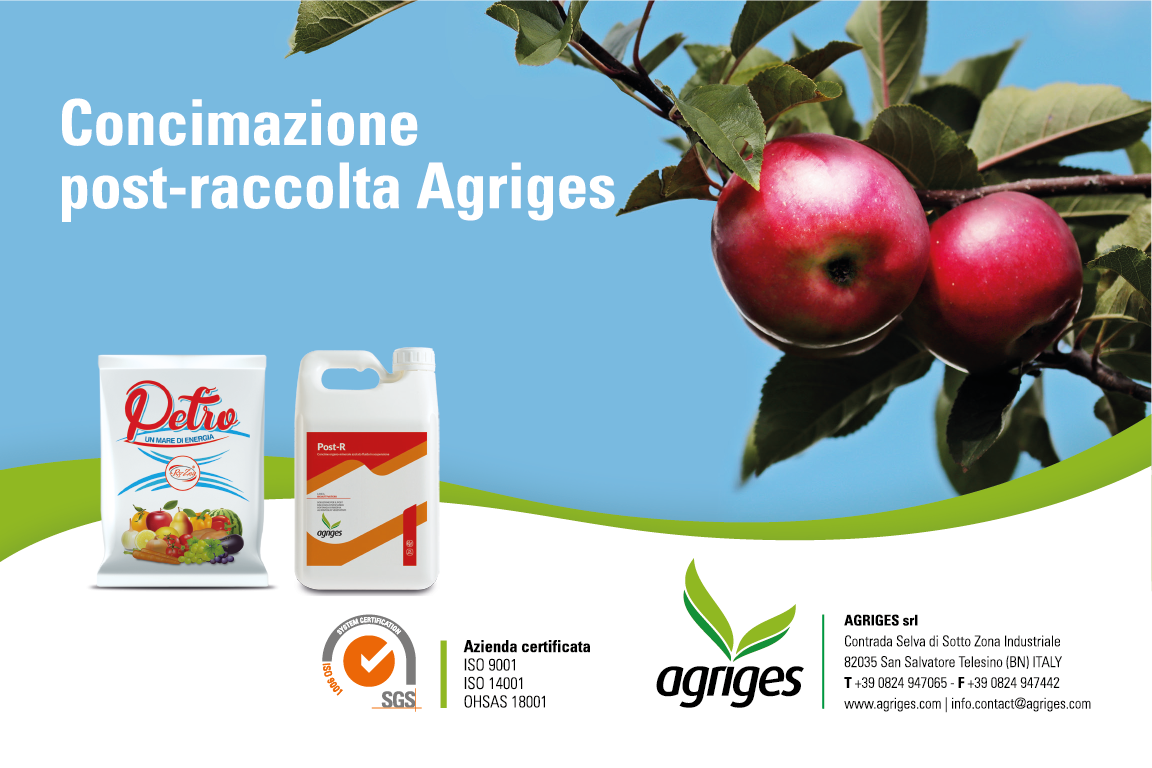Your orchard never stops: post-harvest fertilization
The importance of post-harvest fertilization
The fruit season is drawing to a close and farmers are busy harvesting the fruits of their labour in the field. Orchard care, however, does not end with the harvest; it must continue into the autumn months.
In spring, the vegetative resumption takes place at the expense of the reserve nitrogenous substances, which have been accumulating in the course of previous year in the plant’s woody organs (roots, stem, branches, twigs) and remobilized in the form of amino acids towards the buds that are opening, according to a mechanism known as the "internal nitrogen cycle". As a result, most of the nitrogen present in the newly formed shoots and in the flowers comes from the reserve organs. Just before leaf fall (phylloptosis), nitrogen migrates from leaves to woody organs, where it accumulates again in the form of reserve amino acids, which will then be used in the vegetative resumption. In post-harvest (late summer-early autumn), nitrogen is mainly used to restore reserves within woody organs. 25% of the nitrogen absorbed by the plant is assimilated before winter rest, and used for the accumulation of nitrogen reserves within the woody organs.
The main aim and motivation of autumn fertilization is therefore to increase the reserve substances that will cover the plant's needs until late flowering. Another important benefit is the increased resistance to frost linked to the increased salts in the sap.
Post-harvest fertilization is therefore essential for spring vegetative recovery and should be carried out as rationally and efficiently as possible.
Agriges strategy
The fertilization strategy suggested by Agriges has two objectives: the first is to allow the accumulation of reserve substances that will allow the plant to prepare for an excellent vegetative recovery, and the second is to respond to the current fertilization regulations that aim to reduce the overall quantities of nitrogen provided by fertilisers, with the objective of achieving greater efficiency of use and limiting the well-known drawbacks characterised by economic waste, nitrate leaching into the water table, and excessive vegetative growth of plants.
Depending on the species and variety cultivated, Agriges suggests two different post-harvest fertilization strategies:
- In the case of later-harvesting species and varieties, where days devoted exclusively to the accumulation of reserve substances are limited, it is recommended nitrogen supply by foliar application, which ensures ready absorption of the element.
- In the case of earlier-harvesting species and varieties, where therefore the days devoted to the accumulation of reserves is greater, it is suggested to use organic soil fertilisers, which guarantee a constant availability of nitrogen, a good ratio between nitrate and ammonium ions and an increase in other nutrients and organic carbon in the soil.
Foliar fertilization: what to use?
Among nitrogenous formulations, urea should be preferred for its high nitrogen content, good solubility shown in a wide pH range and, above all, for its apolar chemical nature, which gives a good affinity with the waxes in which it solubilises, thus allowing an easy penetration of the leaf cuticle. In case of use of urea, this must be biuret-free, a phytotoxic by-product which is formed during the synthesis of urea
For post-harvest fertilization, Agriges recommends Post R, a leaf fertilizer based on 19% nitrogen (18% urea) plus microelements and very low biuret content.

Post R contains the seaweed triptych of the RyZea technology, which promotes foliar absorption and conveys the nutrients inside the leaf. The product is ideal for promoting the accumulation of reserve substances within plant tissues before the vegetative rest, guaranteeing an optimal vegetative resumption in spring. The presence of the microelements already present inside the formulation spares the farmer the worry of adding technical urea on the field.
The very low biuret content, which is inferior to technical urea, avoids any possible phytotoxicity phenomenon, guaranteeing an effective nutrition that prepares the plant for optimal spring resumption.
Soil fertilization: what to use?
For post-harvest soil fertilization, Agriges recommends the Petro line products, based on highly humified organic substance and rich in microbial flora beneficial for the soil, humic and fulvic acids.

These are characterized by the presence of three different raw materials that make them naturally "slow release" fertilizers, we are talking about highly humified manure, vegetable matrices and valuable protein raw materials, which ensures constant nitrogen availability to the plant.
In addition, the presence of highly assimilable amino acids and a triptych of algae from RyZea technology provide nitrogen that is immediately transferred to the plant's reserve organs.
In addition, in each product of the line there is a percentage of calcium sulphate with an acidifying and desalinating action of the soil.
From 2022 many of the products of the Petro line have been enriched with a new technology: ThioBac, against salinity and soil fatigue.

The core of the technology is the presence of the unique Siderophore Bacteria, isolated and registered by Agriges within an international reference microbial collection (Bacillus megaterium S3Nb3), which translate iron and mobilise phosphorus, making them available to the plant.




